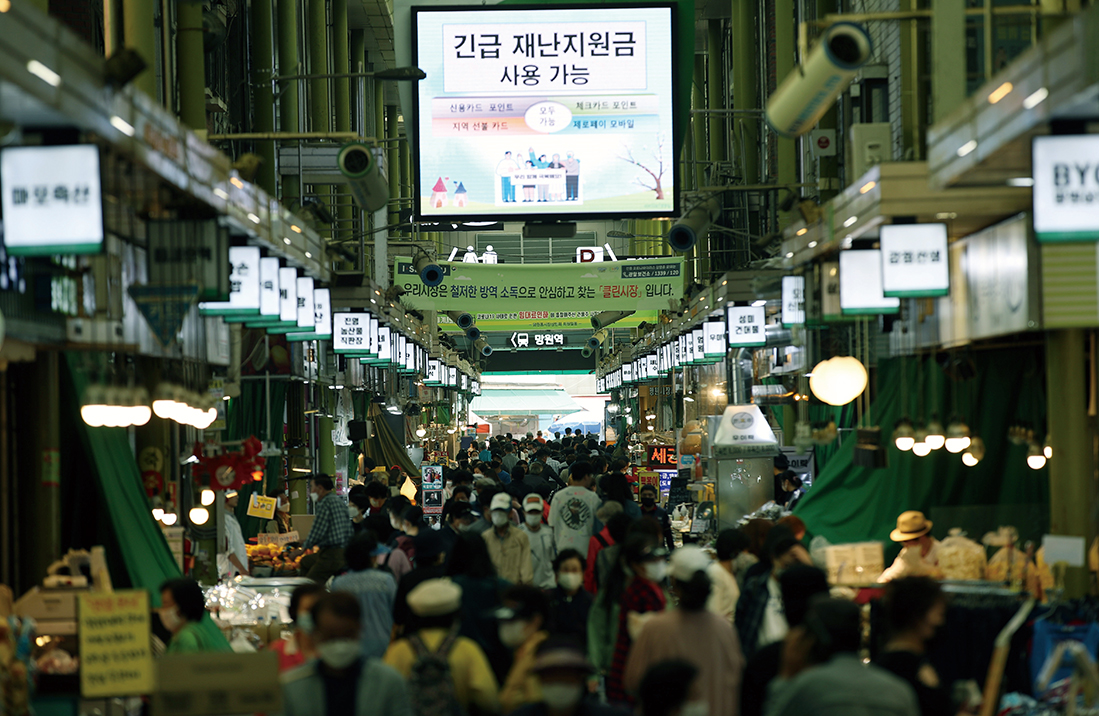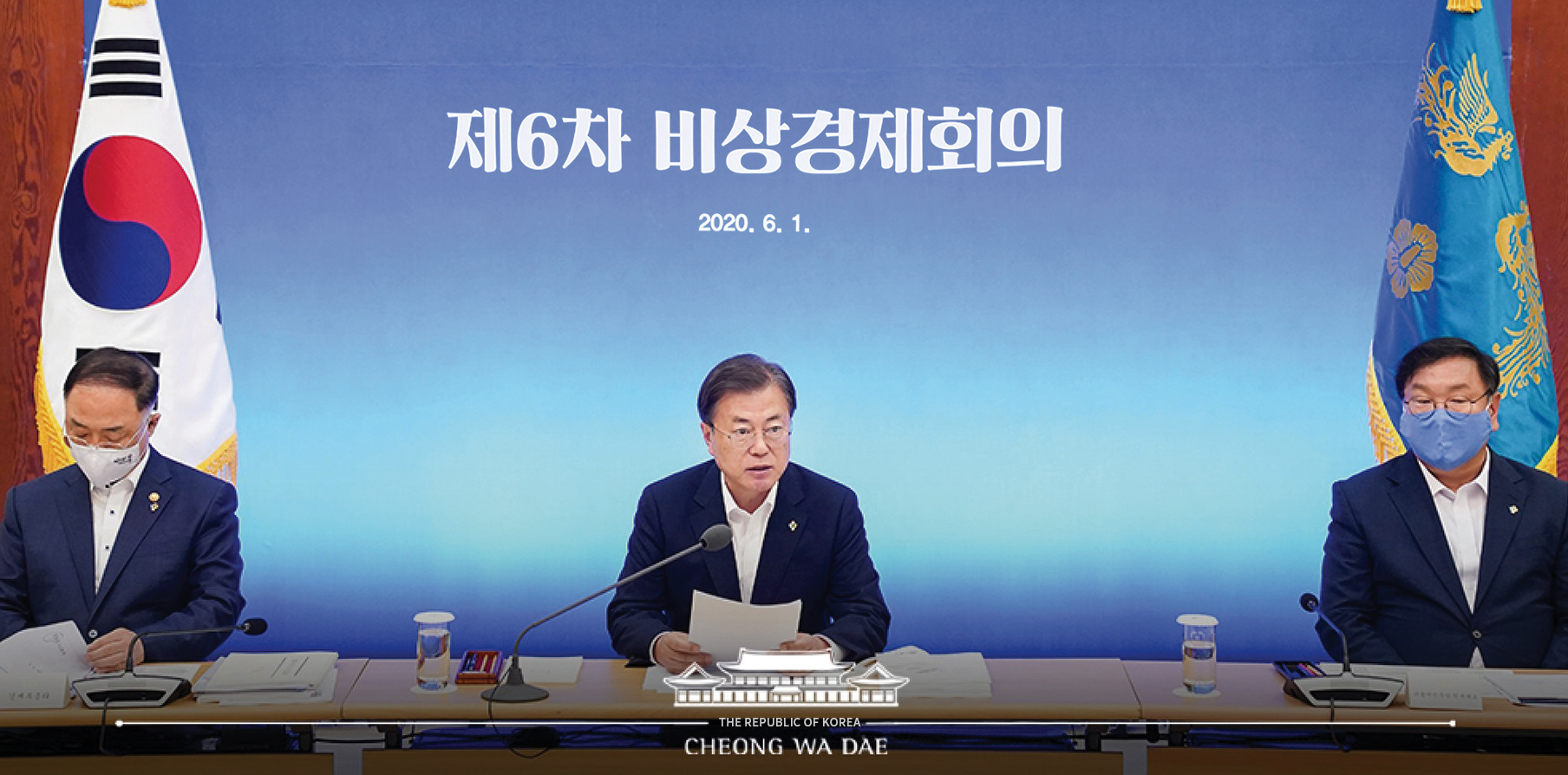Current Korea
Resolute Action amid Crisis
Countrywide Efforts in Recuperating from a Pandemic
Despite the COVID-19 crisis drastically slowing the global economy, Korea has proven its resilience and ability to bounce back even stronger. The government has provided financial support to people and businesses hit hard by the pandemic through swift and inclusive relief measures. Emergency relief funds have gone to every eligible individual regardless of income, and this has helped breathe life into the troubled domestic economy.
Written by • Sohn Ji-ae
People in Korea have returned to markets and restaurants, as traditional areas of bustling economic and social activity are crowded again. Vendors and owners are smiling for the first time in a long while.
Businesses battered by COVID-19 across Korea have apparently regained their vigor, in large part thanks to the government’s stimulus payments to eligible households amid the pandemic-stricken economy.
Emergency relief funds worth a combined KRW 13 trillion were given to individuals from all walks of life regardless of income or property. Receiving the money in the form of cash, debit and credit cards, or gift certificates, people have begun to open their wallets again and businesses have bounced back.
The Ministry of the Interior and Safety said 99.5% or 21.6 million of 21.71 million eligible households had received the relief funds as of June 8. The relief measure led to a rebound in domestic consumption, helping revitalize the reeling economy.
A study released on June 10 showed surging sales at neighborhood and traditional markets, with 24.8% of spending going to dining out, 24.2% to discount supermarket chains and groceries, and 10.4% to hospitals and pharmacies.
Faster Than Other Economies
The measure has received praise for being distributed faster than those of other countries such as the U.S. and Japan. Those eligible for the stimulus got their money quickly, as it was automatically deposited into their bank accounts after rapid approval.
Bloomberg compared Korea and Japan, two countries that provided stimulus funds around the same time, to show how the former was far faster in distributing the funds. Japan used a time-consuming and paperwork-heavy process, thus just 35.9%, or 21.01 million of 58.53 million eligible households, had received the aid as of June 12.
In the article “In Virus Relief, Tech-savvy South Korea Beats Paperwork-heavy Japan,” the U.S.-based business news provider wrote, “That difference reveals a nimbler and more tech-savvy administrative infrastructure in Korea more suited to swift action than the lengthy paper-centric approach of Japan.”
Bloomberg also cited as key factors behind the speedy delivery “Korea’s centralized administrative capability and a national identification system, which enables the government to access personal records, saving citizens from the heavy paperwork required in Japan to verify basic information such as place of residence.”
New Deal to Revive Economy

The government’s pandemic relief funds for eligible households have helped revive domestic consumption. The photo above is of Seoul’s bustling Mangwon Market on May 26. © YonhapNews
To reshape the economy in the aftermath of the pandemic, the government took relief and recovery actions in a swift and systematic manner, distributing not only the relief funds but also implementing other stimulus packages.
Emergency loans were provided to small and medium businesses and low-income families. To expedite growth, the government also drew up this year’s third supplementary budget, the largest in Korean history, worth more than KRW 35 trillion.
Part of the additional budget will go toward further boosting domestic consumption and helping smaller businesses. Another part will support President Moon Jae-in’s “Korean New Deal,” which he recently announced to help economic recovery after the pandemic ends.
The project's focus is on digital and green projects, which the president said will make the nation a global power in the digital economy era by overcoming the coronavirus-induced industrial crisis.
The Organization for Economic Cooperation and Development (OECD) forecast that Korea’s economy will contract 1.2% this year, while the world's is expected to shrink up to 6%, saying its prediction for Korea was “considerably milder than in other OECD countries” including China, Russia, India and Indonesia.
As factors behind how such negative growth will least affect Korea, the OECD cited “the (Korean) government’s effective strategy to contain the spread of the virus, which led to limited damage to the domestic economy,” supplementary budgets funding loans to the self-employed and small businesses to stabilize liquidity, and emergency support for households.
The outlook also allowed President Moon to pursue his Korean New Deal. “Additional support for SMEs (small and medium enterprises) and firm restructuring may be necessary, while boosting investment in renewable energy and clean technologies would help achieve a sustainable recovery,” he said.



















